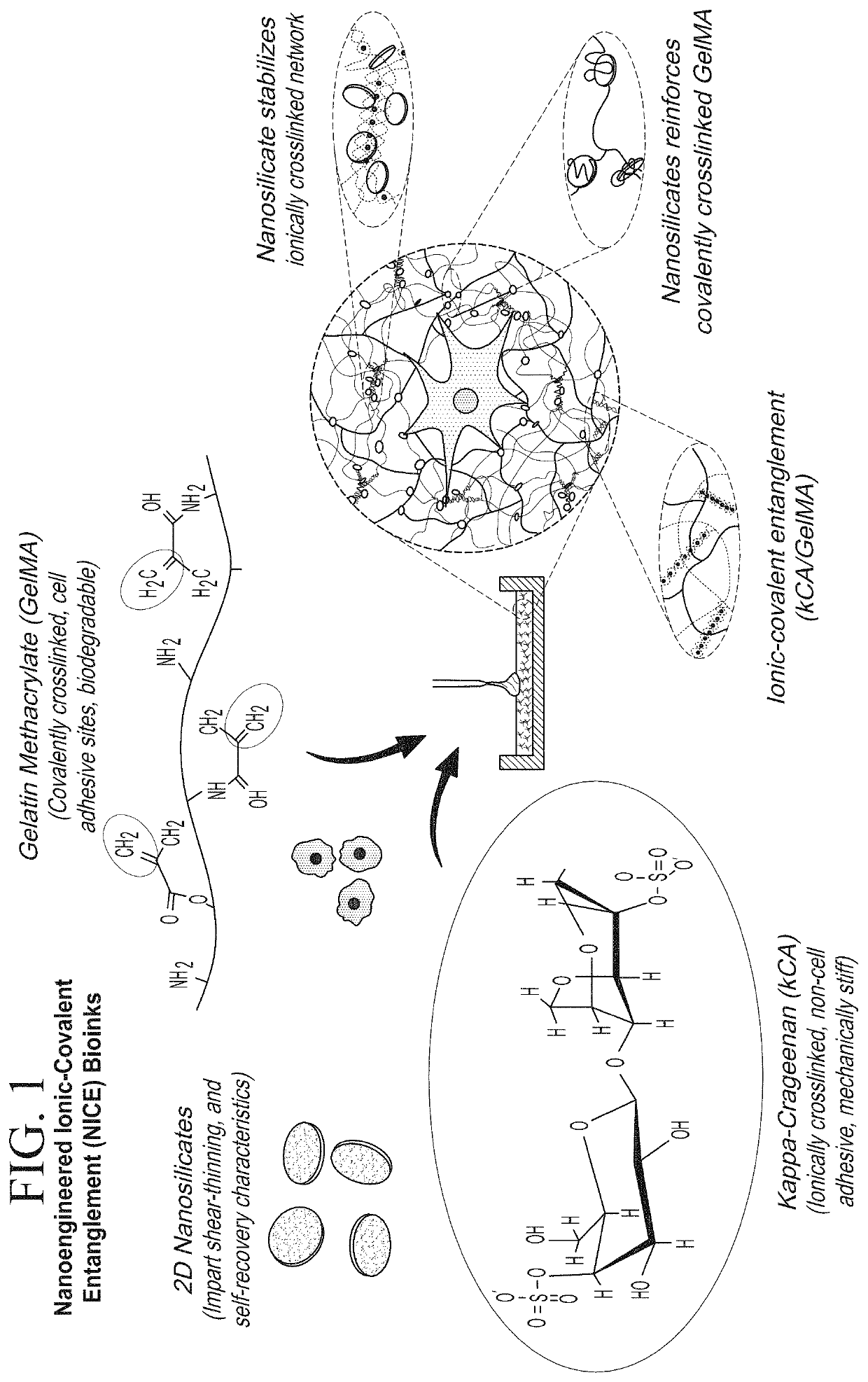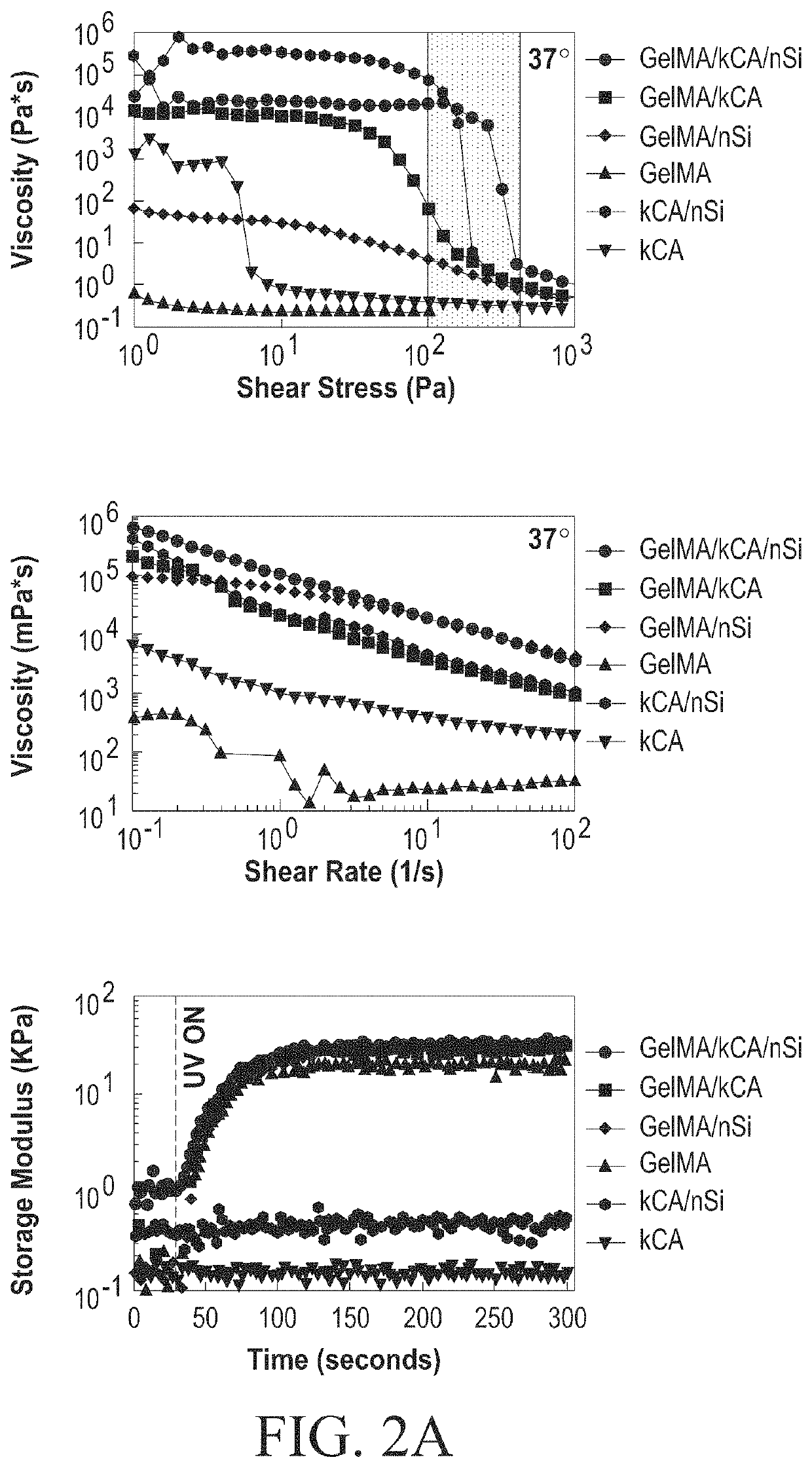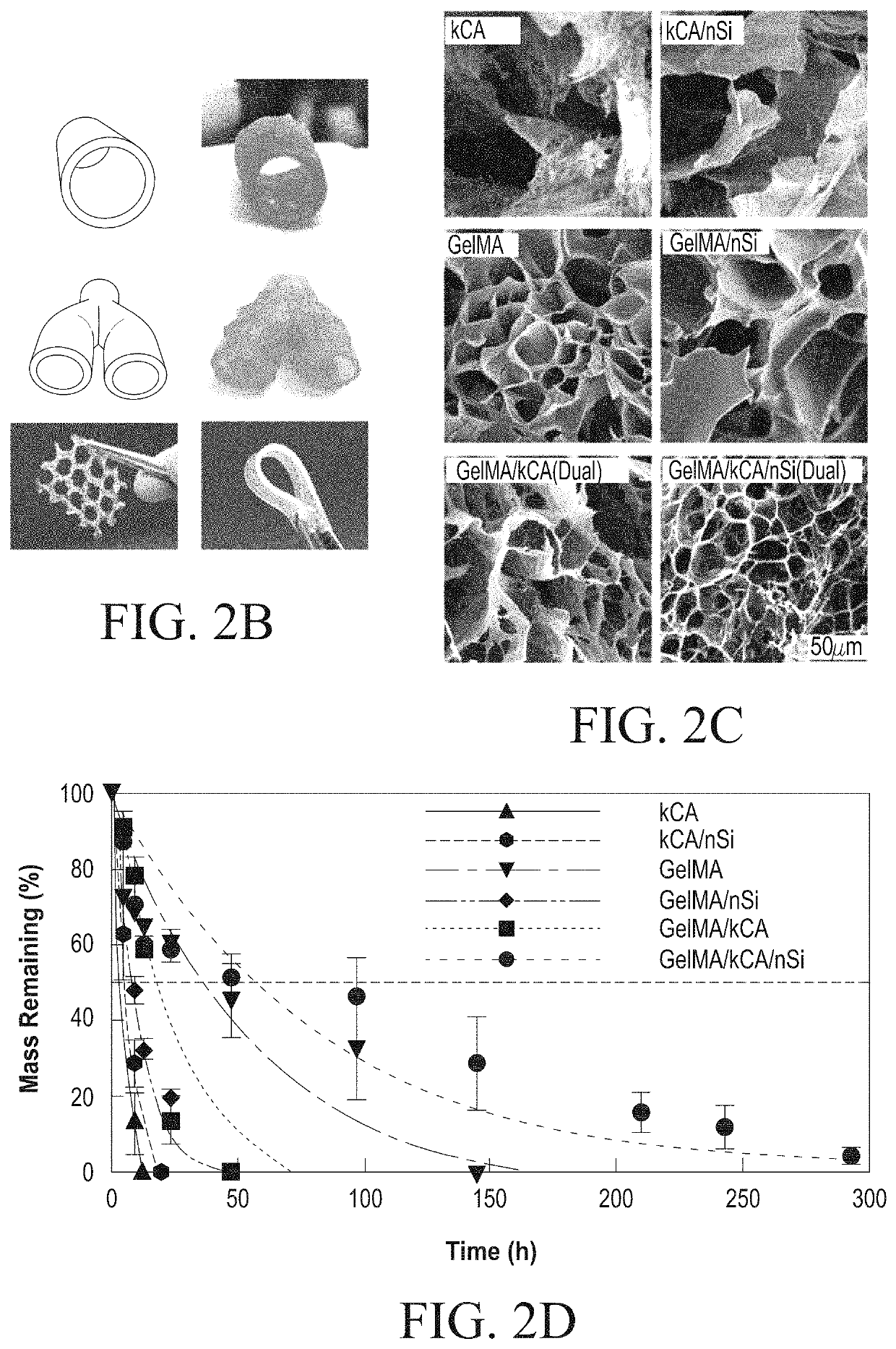Nanocomposite ionic-covalent entanglement reinforcement mechanism and hydrogel
a technology of ionic-covalent entanglement and nanocomposite, which is applied in the direction of additive manufacturing processes, prostheses, manufacturing tools, etc., can solve the problems of poor biodegradability, weaker and harder characterization, and the material has little to no cell-material interaction,
- Summary
- Abstract
- Description
- Claims
- Application Information
AI Technical Summary
Benefits of technology
Problems solved by technology
Method used
Image
Examples
example 1
and Methods—Synthesis and In Vivo Integration and Biodegradability
[0060]The present example describes the bioink composition and synthesis thereof, as well as the use of the bioink in the creation of a multi-layer, 3-D, bioink construct / structure suitable for in vivo and / or clinical use.
[0061]Bioink Composition
[0062]The NICE bioink was made of 10% w / v (80% methacrylated) gelatin methacrylate, 1% w / v kappa carrageenan (KCa), 2% w / v Laponite XLG, and 0.25% w / v Irgacure 2959 2-Hydroxy-4′-(2-hydroxyethyoxy)-2-methylpropriophenone as a photoinitiator. The nanosilicates (Laponite XLG) were sourced from BYK Additives Inc. The porcine gelatin (gel strength 300, Type A) was obtained from Sigma. Irgacure 2959 and Methacrylic Anhydride were both obtained from Aldrich.
[0063]Bioink Synthesis
[0064]Gelatin methacrylate (GelMa) was synthesized by dissolving 10 g of gelatin in 100 mL 1× phosphate buffered saline (PBS), then heating for 1 hour at 60° C. After dissolution, 8 mL of methacrylic anhydrid...
example 2
site Reinforcement
[0092]The nanocomposite reinforcement was accomplished by inclusion of 2% (w / w) Laponite XLG nanoparticles. Laponite nanoparticles have negatively charged faces and a positively charged rim, which allow Laponite to form reversible electrostatic interactions with the polymer backbones of hydrogels, effectively acting as a weak secondary crosslinker. This interaction can improve stiffness, elasticity, adhesiveness, viscoelastic modulus, and cell adhesion in some hydrogels, and imbue hydrogel solutions with complex shear thinning and bingham plastic behavior (FIG. 1). In the NICE bioink, Laponite forms reversible bonds with both gelMa and k-carrageenan polymers, strengthening the bioink before and after crosslinking, and improving its viscoelastic properties (FIG. 1).[17, 25-31]
[0093]Ionic covalent entanglement (ICE) networks are composed of two independent-but-entangled polymer networks that are not crosslinked to each other thanks to distinct crosslinking mechanisms...
example 3
sel 3-D Bioprinting
[0096]The printability of the NICE bioink was evaluated through the present studies to illustrate the reproducibility and objectiveness of the material for facilitating direct comparisons with other bioinks. As previously noted, “printability” is defined as a bioink's ability to print high aspect ratio structures at animal (human)-relevant scales and extrude the intended scaffold architecture smoothly and with high fidelity.
[0097]Printability of the present methods and materials is demonstrated here with a cylindrical print test of a “blood vessel” shape 1 cm in diameter with 1 mm thick walls (FIG. 4B), approximating the scale of a human blood vessel. This construct can be used as a standard to quantify aspect ratio, maximum construct height, and bioink spreading to allow direct comparison to other bioinks.
[0098]Minimizing bioink spreading is necessary for printing high fidelity structures, and was evaluated using the cylindrical print test to a height of 100 laye...
PUM
| Property | Measurement | Unit |
|---|---|---|
| aspect ratio | aaaaa | aaaaa |
| width | aaaaa | aaaaa |
| height | aaaaa | aaaaa |
Abstract
Description
Claims
Application Information
 Login to View More
Login to View More - R&D
- Intellectual Property
- Life Sciences
- Materials
- Tech Scout
- Unparalleled Data Quality
- Higher Quality Content
- 60% Fewer Hallucinations
Browse by: Latest US Patents, China's latest patents, Technical Efficacy Thesaurus, Application Domain, Technology Topic, Popular Technical Reports.
© 2025 PatSnap. All rights reserved.Legal|Privacy policy|Modern Slavery Act Transparency Statement|Sitemap|About US| Contact US: help@patsnap.com



